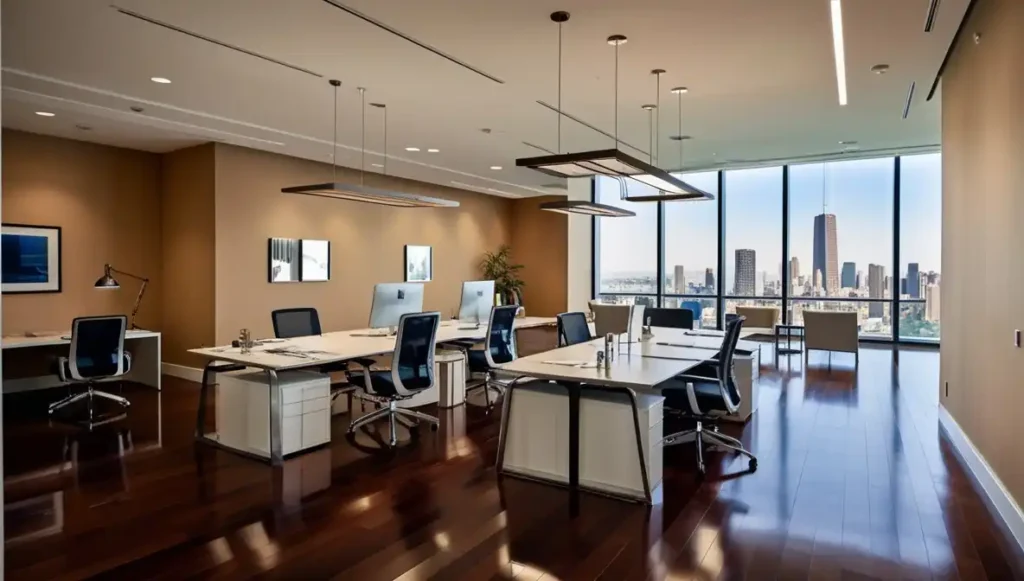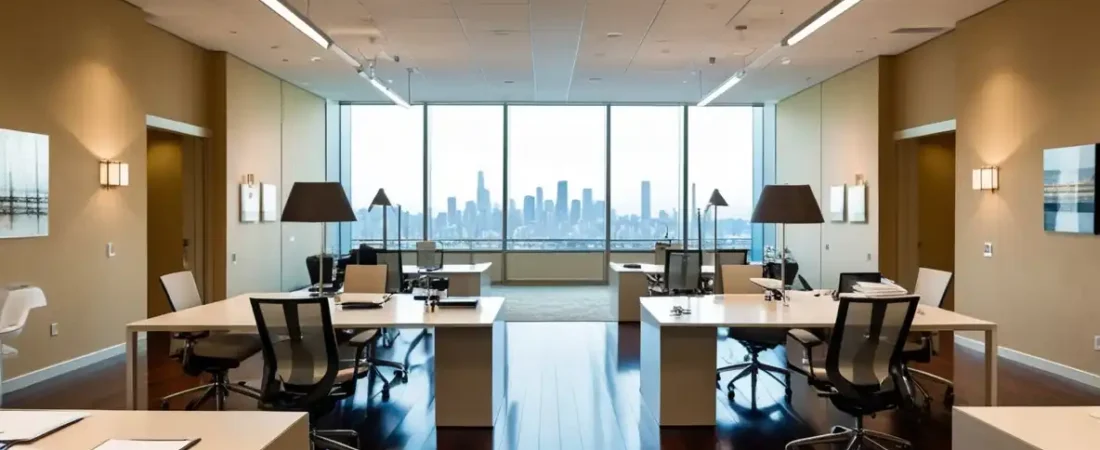Creating an efficient and aesthetically pleasing office interior is crucial in the modern business landscape. The essence of a productive work environment lies not only in functionality but also in the ambiance that encourages creativity and collaboration. In this article, we will explore the significant elements of office interiors, the latest design trends, and practical tips for creating spaces that foster innovation and well-being.
The Importance of Office Interiors
In today’s fast-paced, competitive world, the design of an office can profoundly impact employee morale, productivity, and overall business success. A well-designed workplace can:
- Enhance Employee Comfort: Comfortable and ergonomic furniture improves employee satisfaction and productivity.
- Boost Collaboration: Open spaces can encourage teamwork and communication among employees.
- Reflect Company Culture: Your office interior communicates your brand’s values and culture to both employees and clients.
- Improve Well-being: Proper design enhances the mental and physical well-being of employees, reducing stress and burnout.
Key Considerations When Designing Office Interiors
- Understand Your Brand Identity Your office interior is a physical manifestation of your brand identity. It’s essential to ensure that the design aligns with your company’s values and mission. For instance, a tech startup might lean towards a modern, minimalist design, while a law firm may prefer a more traditional and formal atmosphere.
- Incorporate Flexibility The way we work is continuously evolving. Incorporating flexibility into your office design allows for different working styles—individual, collaborative, or hybrid. Consider adaptable furniture that can be rearranged as needs change.
- Embrace Natural Light Natural light has a profound effect on mood and productivity. Offices designed to maximize natural light not only reduce energy costs but also create a welcoming environment. Use large windows, skylights, or glass partitions to invite sunlight into the workspace.
Key Elements of Office Interiors
Space Planning
Effective space planning is foundational in office design. It involves arranging furniture and defining areas to optimize flow and communication.

- Open Concept vs. Closed Offices: Determine the balance between collaborative spaces and private offices. Open concepts encourage teamwork but might require quiet zones for focused work.
- Breakout Areas: Incorporate informal sitting areas or lounges where employees can unwind or hold informal meetings.
Ergonomics and Furniture
Investing in ergonomic furniture is critical for supporting employee health and productivity. Consider the following:
- Desks and Chairs: Opt for height-adjustable desks and supportive chairs that promote healthy posture.
- Acoustic Solutions: Incorporate sound-absorbing materials and furniture to reduce noise levels and distractions.
Color Psychology in Office Interiors
Color greatly influences mood and productivity. When selecting colors for your office, consider their psychological effects:

- Blue: Promotes calmness and focus, making it ideal for areas requiring concentration.
- Green: Linked to creativity and relaxation, perfect for brainstorming zones.
- Yellow: Inspires optimism and energy, suitable for collaborative spaces but should be used sparingly.
Incorporating Nature: Biophilic Design
Biophilic design integrates natural elements into the workplace to enhance employee well-being. Research shows that incorporating nature can reduce stress and improve cognitive function.
- Plants: Adding greenery improves air quality and boosts mood. Consider low-maintenance plants like succulents or snake plants for ease of care.
- Water Features: If possible, include elements like fountains or aquariums to create a calming atmosphere.
Current Trends in Office Interior Design
Sustainability
Sustainability is no longer optional; it’s an expectation. Eco-friendly office design reduces environmental impact and can enhance brand reputation.
- Recycled Materials: Use furniture and construction materials made from recycled products.
- Energy Efficiency: Implement energy-efficient lighting and HVAC systems to minimize waste.
Technology Integration
Incorporating technology seamlessly into office interiors optimizes productivity and improves the employee experience.
- Smart Office Solutions: Utilize smart lighting and climate control systems that can be adjusted for individual needs.
- Collaboration Tools: Design spaces with the latest video conferencing and collaboration technology to facilitate remote work.
Health and Wellness Programs
The modern office should also promote health and wellness services. Integrating spaces for physical activity and mental well-being is essential.
- Gym Facilities: Onsite fitness centers encourage employees to stay active during the workday.
- Meditation Rooms: Quiet spaces for mindfulness and relaxation can help reduce stress and improve focus.
Practical Tips for Redesigning Office Interiors
Assess Your Current Space
Before embarking on a redesign, assess what currently works and what doesn’t. Gather feedback from employees to understand their needs and preferences. This data will help inform your design choices.
Set a Budget
Designing or redesigning an office can be costly. Set a realistic budget that considers all elements—from furniture to décor and technology. Allocate funds wisely to ensure you’re investing in high-impact areas.
Engage Professionals
While DIY options might be tempting, hiring professionals can save time and ensure a cohesive design. Consider engaging interior designers who specialize in office spaces to help you achieve your vision.
Creating an Office Interior That Adapts to Change
The workplace is continually evolving; thus, your office interior should be adaptable. Design flexible spaces that can be easily repurposed or updated as your team grows or workflows change.
- Modular Furniture: Choose furniture that can be easily moved or reconfigured without significant effort.
- Multi-purpose Rooms: Create spaces that can serve various functions—meeting rooms that can double as break areas, for example.
Encouraging a Collaborative Environment
An open environment encourages spontaneous interaction and teamwork. Introduce communal areas that invite collaboration while maintaining quiet zones for focused work.
Example Layouts
- The Hub-and-Spoke Model: A central open area (hub) is surrounded by smaller private offices (spokes).
- Activity-Based Working: Offer a range of different spaces dedicated to specific tasks, from quiet zones to collaborative areas.
Conclusion: The Future of Office Interiors
The future of office interiors revolves around creating spaces that prioritize employee well-being, flexibility, and sustainability. Investing in design not only enhances the work environment but also reflects a commitment to employees and the community. As businesses continue to evolve, so too should the spaces they inhabit.
In an era where remote work is increasingly common, ensuring that your office remains an appealing and functional space is crucial for attracting and retaining talent. By embracing the principles outlined above, you can create an innovative and engaging workplace that inspires your team.
For more insights and resources on transforming office interiors, check out this comprehensive guide from the American Society of Interior Designers: ASID – Design Resources

